10 years ago by
This is Marion, who is French, lives in New York and is the Designer of Accessories at Jason Wu. I’ve known her for a few years and I really admire her creativity and the way she goes about her career. I thought you might be interested to learn more about her dream job!
Where did you grow up?
In the South of France. My parents live in La Drome, it’s the countryside.
My father lives in a thousand year old church. It’s very special, my garden is very old century and the atmosphere is very hippie.
When you were growing up, what was your dream job?
To be a fashion designer.
Why? What made you so excited about fashion?
I was 4 years old, and when I didn’t know what to do, my mom would give me a piece of paper and a pen and would say “sketch something! Sketch what you have on your mind. If you don’t know what to do, just draw or write something.” She always told me that if I didn’t know what to do with my life, to just be creative, don’t wait for the world to provide you with something. Just create it. And we didn’t have clothes, so we would create them. We would design a print: my mom would design a skirt I wanted.
I think when you have a dream you may forget it for like 10 years, but it will always come back to you. I don’t know how, but it happens. I sometimes feel that I’m creating something that has a cartoon feeling. It’s all about proportion, how attractive it can be. I really love animation for that because you don’t fall in love with the story, you fall in love with how artistic it can be. So yeah, it was to work for Walt Disney as an illustrator or be a fashion designer and I always said that. I never changed my mind.
So did you go to school to study fashion?
I went to ESMA (Ecole Supérieure des Métiers Artistiques) for two years and then the third year was in Paris and I had to have a specialization so I did haute couture and modelisme, so I can make clothes as well. I never thought about designing accessories – ever.
But the funny thing is that I come from La Drome near Romans which is a town known for having the best shoe factories. I used to go there when I was a kid, I was obsessed with the shoes and I forgot that.
She [my mom] always told me that if I didn’t know what to do with my life, to just be creative, don’t wait for the world to provide you with something. Just create it.
What did you do after ESMA?
So I went to ESMA and I was 21 years old. In France, you have to find a job when you’re 21 years old, but who wants to hire you? You have a general idea of who you are, but you’re not sure, your taste is not that perfect, it’s really hard to know yourself at 21. It was 10 years ago and the internet was not everywhere yet. I was always buying magazines. Now I feel like people can relate to fashion more easily when before it wasn’t that easy. It was more luxurious items, it was more a dream. It was different.
I felt that I had to continue my studies so I went to school and did a Master’s in Marketing and business development. Then I had a few jobs – I was obsessed with Yves Saint Laurent and especially Stefano Pilati, he did a wonderful job, the dresses, the cut was amazing. They were looking for an intern, but I became an assistant in accessories. I thought it was really weird to sketch shoes every day, it felt very weird and then one day I fell in love with it.
What do you think made you fall in love with it? What was the switch?
The day I understood that it was really architectural and that it was not all about the technique. There are always limits – shoes you cannot do everything you want, but you can always find a way to get something that is unexpected. I did the shoes for Calvin Klein Collection last year and they were rubber balls and the entire sole was flexible. They were high heels, like 110cm, but they were flexible. There were different layers, and one was soft.
When you were in school, was part of your studies about shoes?
Never!
That’s crazy, because I feel like it is so technical!
I went to the library like 5 days before my interview at Yves Saint Laurent and I was like “okay how does it work?” And well obviously we didn’t talk about that stuff, but I felt like I could understand the job.
It takes a long time to really feel comfortable designing shoes and to be sure that you don’t look ridiculous when you go to the factory because they know what they are doing and they are really good. You can’t go there and not know what you’re talking about. When you go to Italy, you walk in with the real people and those are the real artists.
When you got your first job at Saint Laurent, did you know someone, or did you just apply?
There was a website about fashion where they post jobs, it’s not big positions, but they were looking for an intern, I had no idea but I thought I was the only one applying for the position, but there were so many people because it’s so competitive at Saint Laurent. I’m really glad I did it.
What did you learn at Saint Laurent?
The good part about Saint Laurent is that I worked with 2 very different people and Francesco Russo is amazing. He is super creative and is good at extremely precise sketches. He sends a sketch and there are no explanations needed because it’s all perfect. And he asked me to sketch exactly like him so that nobody would recognize the sketches are mine and it was the same for the rest of the team, they all sketch really well. I know now that my sketches are really good, because I learned from one of the best.
Then I went to work with Alain Tondowski and his approach is very architectural, and his constructions are always very well thought out and he takes a lot of time. It’s all about balance. He stays in the factory and looks at everything, every little detail.
So what was next? How did you come to New York?
I was in love with New York, so I sent my resume to Proenza Schouler because that show they did with the fish collection, I thought “Oh my god, this is really cool. It’s fun, it’s fresh, it’s new.” I met Darren Spaziani, the accessories design director at the time, first and it was so amazing. He’s so creative and he told me “Okay, I’m looking for a designer to work with me on bags and shoes and jewelry and I’m looking for a partner who can help me build something,” because when they launched the PS1 it was really a hit bag.
Then I was working on bags, just like that– it happened to be with this amazing guy. It was a great time because the company was growing and felt like a family and it was working well. It was so different from Paris – the way you work here, there are no rules. Like one day they’ll be “Do you want to work on jewelry?” and it’s like “Okay!” It doesn’t happen this way in Paris. There’s a guy I know who designs for scarves for a luxury brand and he cannot change jobs because he’s a scarf designer – but he can design other things too! That’s the thing, I felt that here, if you have an idea, you can do it.
I did that for 3 and a half years and then I got a great offer at Calvin Klein Collection to design the shoes for Francisco Costa. I felt it was such a good change, and I was really excited about the job. I did the shoes for the 10 year anniversary show, which was last year.
Then Jason Wu called me and wanted me to do bags and shoes, and his company, it felt like family. So here I am.
So what’s your official job title now?
Now I am the Designer of Accessories. I talk to Jason and I talked to Marie Charensol, the Design Director of Ready to Wear, and it feels really good to be sure that the bags are going to be great with the shoes because it’s all linked.
How big is an average accessories design team?
Saint Laurent design team was 2 people for the men’s shoes and 2 for the women’s shoes. At Proenza we did everything, Darren and me, and I had an assistant. At Calvin Collection it was me and my assistant.
What is the working relationship like when you’re doing the accessories with the people who are doing the clothes?
It’s very different from one company to another. Saint Laurent it’s like Calvin, at big companies it’s on another floor. You have meetings with Stefano or Francisco and then they provide you with a general idea for the theme of the show, but it’s a little more separated, so you work on your side and usually the company has a very strong identity – so you know when you’re good at designing a Calvin Klein collection and you know the looks, so you don’t have to define the woman – you know who it is. It’s more about saying something and working with the code and usually you design blindly because somebody is going to look at everything, but you don’t know how the collection is going to look.
When you go to Italy, you walk in with the real people and those are the real artists.
So in a smaller company, is it a lot different?
So different! Jack and Lazaro would see the sketches and they have an idea of what they want, but Jack would be like “Oh, I feel that, I like that” and then you would all talk together. It’s an open conversation.
Usually in very big companies you don’t know what’s happening. It’s not that easy. It’s pretty challenging because you have a general idea of what you want to do, and they’ll tell you, but it’s always too late, so it’s a bit complicated.
What typically comes first, the clothing and then the accessories, or do you feel that it happens at the same time?
No. Shoes you have a deadline because it takes time to make the mold and you have to make the form of the shoe, and the heel is last and it doesn’t take as much time, but they have to make the actual pieces in plastic. there’s a process for the heels and it takes different timing. So you can’t change your design a lot.
Is it the same with the bags?
With bags the limitation is the leather. But you can change a bag like 2 weeks before the show. But with shoes, if you want to change a heel from 110cm to 75cm, 3 weeks before the show, it’s going to be very difficult. You can make it happen, but it’s hard.
Accessories can make up a big part of the company’s business, because it’s a lot easier to sell a bag or a pair of shoes than it is to sell a dress or a skirt, so do you take into account sales and what you think is going to sell well?
Yes. What I do, I have in mind one bag for the pre-collections, it’s more of a casual bag, and then show bags are for the shows. But this season, I did the Diane Bag and the Charlotte bag. It’s an easy bag and very easy to wear, so I would say I do one bag for the show and one classic bag.
Is it the same for the shoes too?
Shoes are different. It depends on the company. The best is a company like Saint Laurent where you have different lines. It’s extremely organized and you find a way to sell the shoes very well. Then small companies you if you go for fashion shoes, it can be a risk, but if you want to sell shoes it’s such a specific business, you have to compromise the style. It’s really hard to sell super fashion shoes.
Do you feel like you’re able to express your creativity in your job and not be limited by what needs to sell or what needs to go in the collection?
I think so. It really depends. 5 years ago I was disappointed because I felt like I couldn’t go more crazy, but these last few years, people have gone more minimalist and everyone wants that, so I feel like especially for shoes right now, we don’t want to go crazy and it actually sells, so that’s a good thing.
Aside from the sketching and design portion, what else does your job entail? Can you talk more about the production part of it and what it is to actually be an accessories designer?
If you think about a bag in a collection, and it’s a timeless bag, you design that, and then you have to think about the practicality. If it’s a big bag, it is just going to be for tall girls, because a big bag is never going to be for petite girls.
You have to think about it for production, those details. How heavy the bag can be, the price, the hardware, how the suede can last, the colors, how the leather is going to wear, you have to test the leather, try all the bags and wear them. You have to consider if the bag is going to collapse or if it’s going to stay. If you want it so rigid that it looks vintage, it’s a long process because you’re still working on it after it’s done. You have to look at the bag for 6 months to see how it reacts in real life. This bag, I like it, but I feel like the hardware is annoying when I walk – it catches my jacket, things like that.
For shoes, if you have a good factory, usually the shoes will last; you just have to be careful that they are comfortable. Then the design is just the design.
How do you test all of the products?
For testing a bag there’s only one way: using it! I carry the bag and I don’t try to treat it nicely! After few weeks, I know if we need to change the leather, or if there is technical issues that we didn’t notice before.
For the shoes, usually I test with a shoe model. We can see after 10 minutes if something is wrong with the shoe.
Do you travel often to the factories, how do you work with production in that sense?
I used to travel every month, going to Italy every month, but it depends. There are some seasons you have to travel more than others, for example if the construction of the bag is very complicated you have to go see them at the factory and talk to them and try different things.
So what do you do with them when you’re there at the factories?
For shoes the first trip is to make the new lasts: I go to the factory that makes the lasts with very detailed sketches. Shoe design is really about being very picky and a millimeter can make a big difference visually and for the fit!
Then I work with the technicians to make them. It’s like a sculpture: you sculpt the last with the shape you want.
I do the same process for the heel; accurate sketches and then “sculpting” the heel with the technicians.
Then for the 2 next trips I look all the prototypes on a foot model and I change the lines to make it look exactly like what I have in mind. And if there are any technical issues–a stitching placement hurts the foot, or a strap position doesn’t hold the foot enough–I improve it with my technicians.
I also look at all the materials that I ordered to double check that the color is right, that the thickness is good for the styles I am going to use it for.
For the bags and belts, I go to Italy to pass the modifications on the prototypes. I concentrate a lot on the lines–it has to be visually attractive–and on the practicability–Is it too big? Is the length of the strap right? Is the bag too heavy? Do we need another pocket? –and on the structure and reinforcement of the leather. And I double-check all the materials again.
Why do you work with Italian factories?
Italy has amazing factories and passionate artisans and technicians.
It’s been centuries of knowledge that generations transmit from one to the next.
In this world of consumerism, it is very important to preserve that kind of treasure. When you buy a luxurious item: a bag, shoes, belts, gloves, that are made in Italy, they are made with great attention by people who do their best to create something unique.
How much do your sketches and the final differ from one another?
They don’t differ.
Is that why the technicality of the sketches is so important?
The technical sketches always get you to where you need to go. It’s the same for Ready To Wear – you have to think about how it has to be crafted.
How do you make a shoe comfortable?
There are some placements where we know that we cannot have a cut or stitching because that hurts. Some leathers are not easy to use either because they are too stiff.
There are some measurements to know, when you make a pointy toe, so it won’t be too narrow but still visually interesting.
Then, the technicians can tell you if they are concerned about a detail.
I personally think that the height doesn’t matter if the instep is well made, which depends on the factory, but 115 mm height (talking about the last, not the heel) is the maximum for me.
How far in advance do you work on the pieces for a collection?
Four months.
Where do you find inspiration?
It depends. Usually people get inspired by artists, you see a painting and then it makes you feel this way – this is more for the original vibe, for the show.
For a bag, I feel like it’s a mix of something I would love to have and that’s missing. It could be also finding a handle I love, and then figuring out, like a puzzle. Sometimes it’s something like the function – like this kind of bag, this kind of girl. Sometimes it’s a little less dreamy, you kind of have to get real with bags. With shoes you can design shoes more dreamy. With bags you know who is going to be the client and the muse.
How about for jewelry?
I did jewelry for Proenza one season when they used ropes, they told me that we should have some jewelry for the lookbook, not to sell it, just to have something interesting to add. And so just by hand I did something super crafty with beads and stones and I showed them and they thought it was really cool and they decided to use them.
How do you produce something like that in mass?
Well then it was a long process to get things looking crafty but also usable. This season the jewelry for Jason, it’s all brass so it’s not crafty. I did sketches and went to the factory and showed them exactly what I wanted it to be done. It was such a short time, to really get it done. The inspiration is all coming from the bag.
How closely do you follow trends and how do you know if there’s a trend that the industry is feeling?
For bags there are trends for sure, you know Mansur Gavriel, Floriana is a friend of mine and she told me about the bucket bag a long time ago and then she launched it and now everyone is doing a bucket bag. And then the Trapeze tote from Céline and now there are trapeze totes everywhere. I try to really not follow that and do the opposite, so if it’s a bucket bag, I am not going to design a bucket bag. Or if the trend is soft totes, I am really not going to try soft totes.
What’s an average day like for you?
Morning is always about emailing Italy because of timing. Then I always try to keep an hour to just chill and look at different products, and a few blogs and always on the Internet you find cool stuff, just what’s happening. I look at bags, I try to go to some museums and watch some movies, but I like to try to focus on one thing, like today is going to be a bag day, tomorrow is going to be a jewelry day and shoe day. I really don’t find it interesting to jump from one thing to another. I get confused.
Do you spend the rest of the day doing a lot of sketching?
Yeah.
What do you like the most about your work as a designer?
I think I like when I sketch something and you know when you’ve sketched something there’s something there. That moment when it clicks and you stop and you’re like “okay, I know this is a good one” and there’s like 20 bags but this one you know is the one you want. That’s my favorite moment.
What’s the most challenging?
When it doesn’t click, when it doesn’t happen. The worst is when you sketch something and you’re like “that reminds me of something” or you do something and the following day you see a bag in the street and it’s already been done. I’m not crazy about shows either.
What’s the best advice you’ve ever gotten from anyone?
I would tell you some things that my mom tells me. When you work in fashion you forget sometimes, because you can panic for the silliest things. Sometimes I will wake up at 4am worrying about the stitching. My mom will always say, “I’m going to tell you something and don’t get mad at me, but it’s only a shoe.” So I would say don’t get so serious about it. There are going to be many shoes, many bags, and as long as you’re happy about what you just did, it’s good.
When you have an assistant working for you, what do you look for in someone that you would hire?
A nice person that anticipates everything. It’s hard to find someone that’s going to be professional and anticipate the problems we’re going to have. It’s really about that, and a lot about timing and being creative and taking the time to be creative.
What would your advice be to an aspiring designer?
Work hard when you’re young because then you can really have fun. But you have to work very hard and don’t expect people to love you. Try to find different ways to make it happen. If you want to have a good bag, you can make it happen in 4 prototypes or 1. If you’re clear and can explain things very well, you’re a good manager. You have to work on the way you communicate ideas. You have to be aware that it’s about it’s about expressing your enthusiasm.
There are going to be many shoes, many bags, and as long as you’re happy about what you just did, it’s good.
What is an average salary for someone who works on a design team?
You can make a lot of money. But when you start, you get nothing for like 5 years. But when you do get it, you can have a very good life. You really have to prove yourself.
What’s your dream for your career?
I think I would be happy working with a team with nice people and have every day be exciting. Just continue what I have with Marie, it’s great. I don’t believe in crazy hours. You don’t get a better result working 10 hours a day. It’s nice to come in and just do it.
Do you ever dream about having your own brand or are you happy working with other brands?
It sounds great on paper, but when you have your own company, half of your brain is crazy with numbers. So not for right now.

























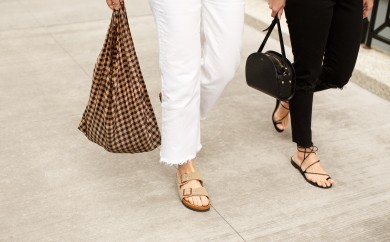
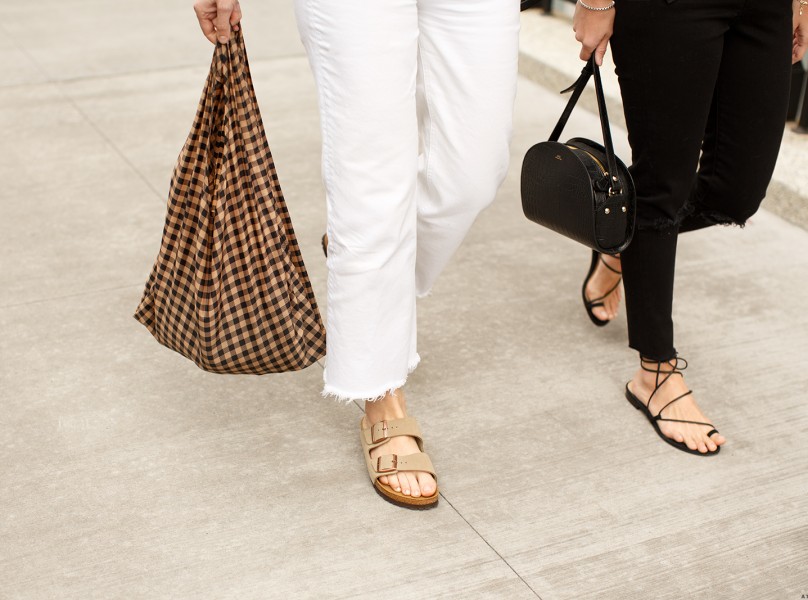
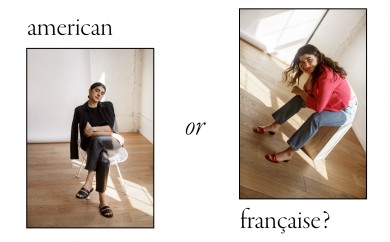
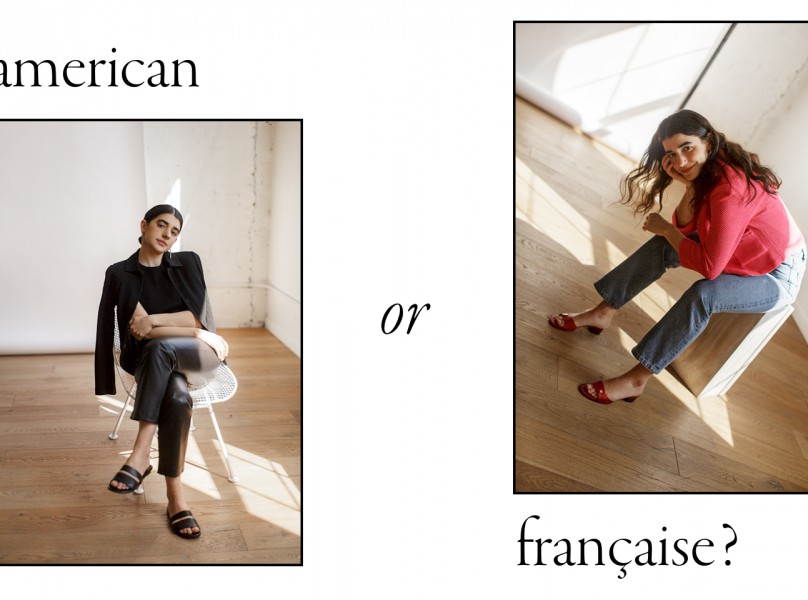
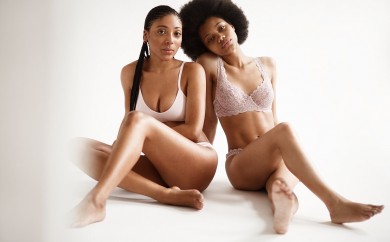
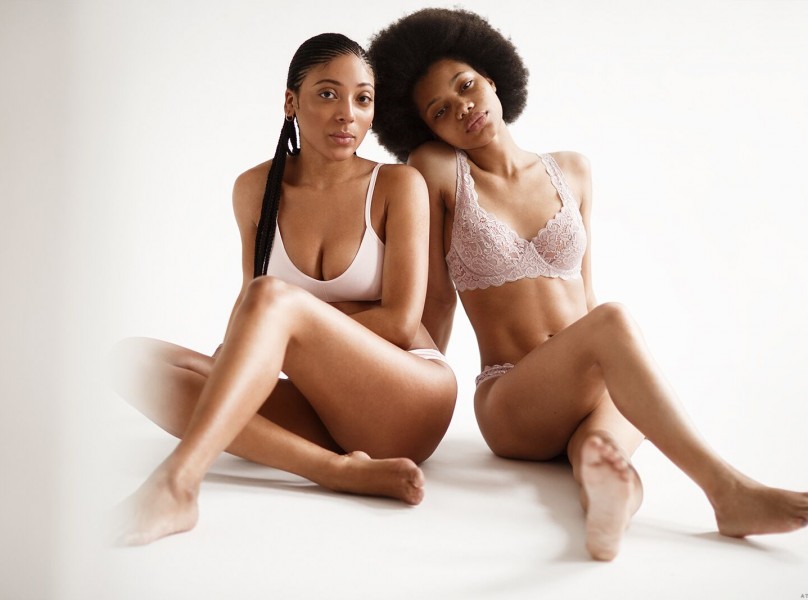
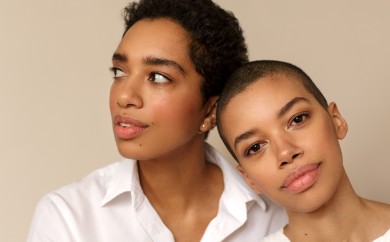
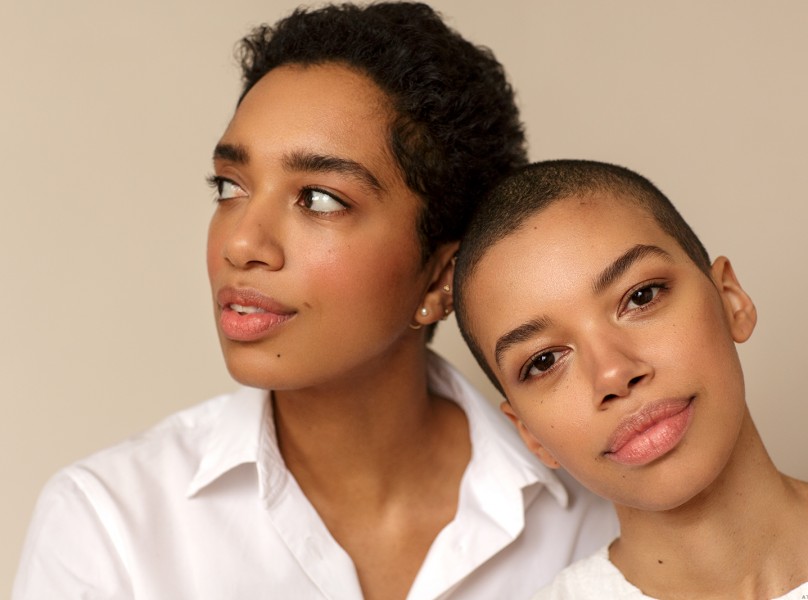
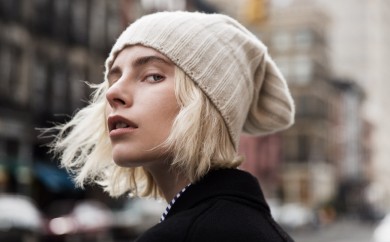
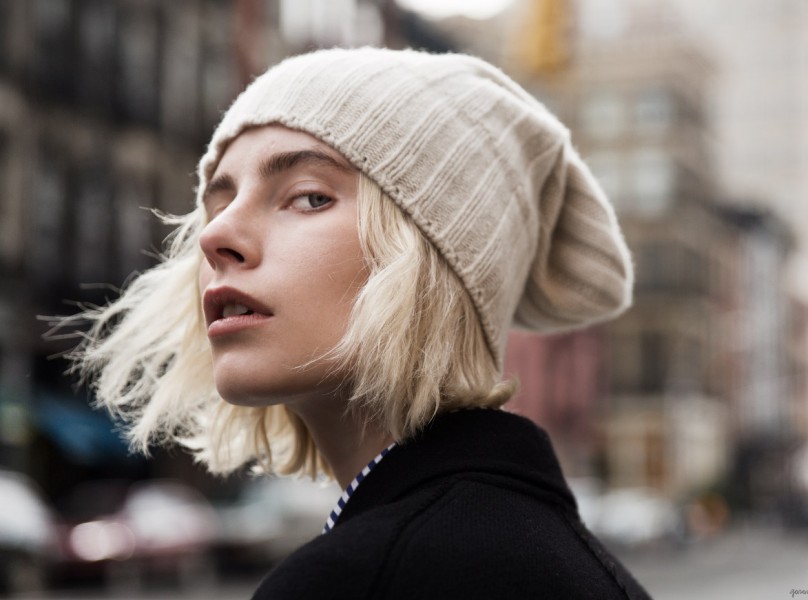
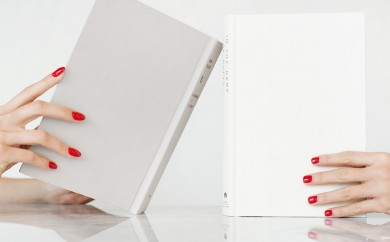
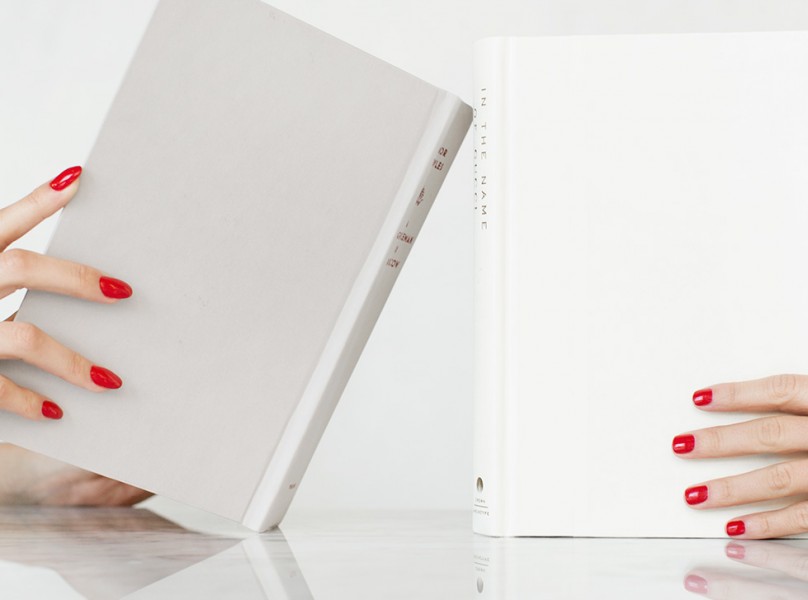
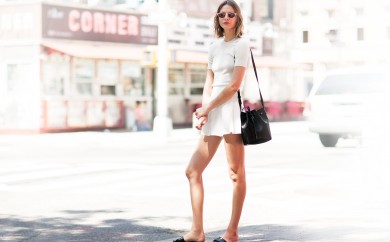
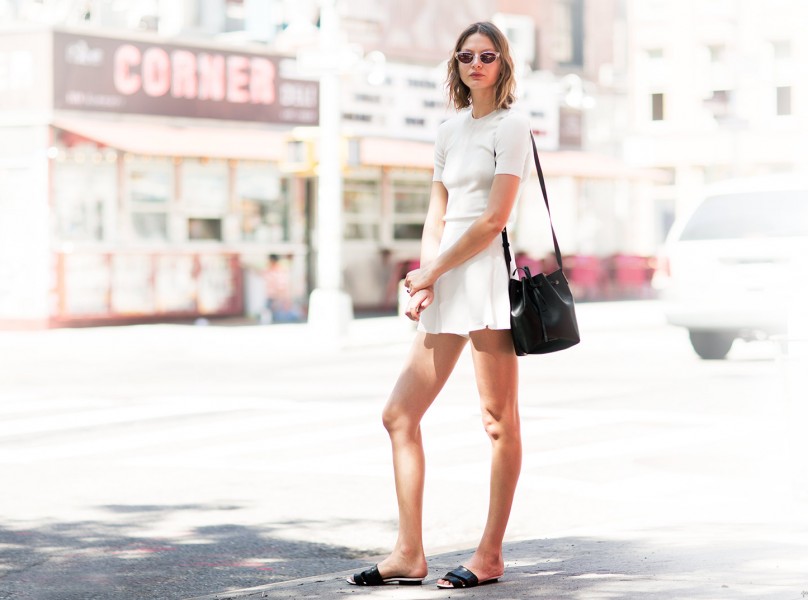
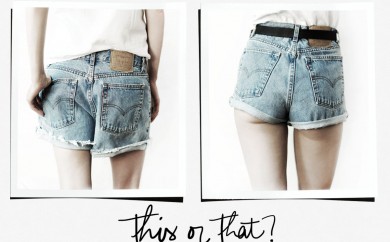
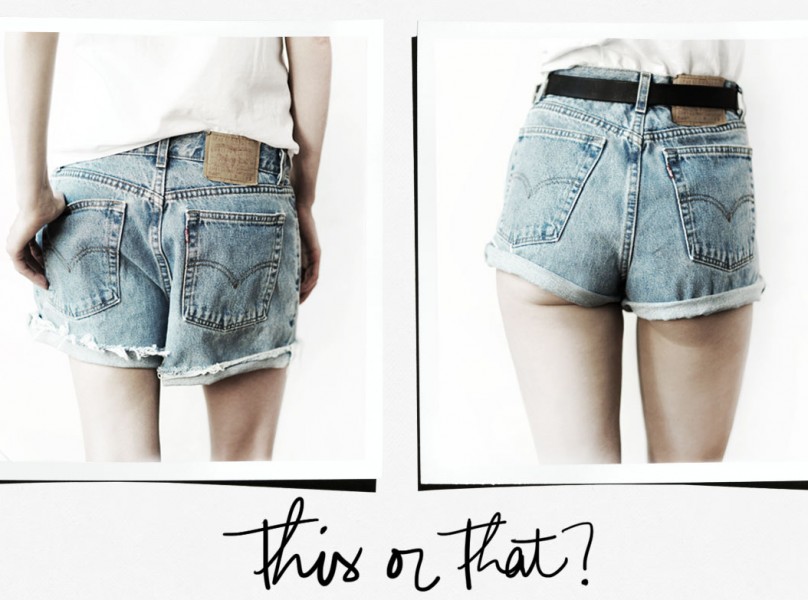
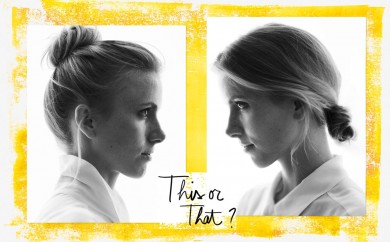
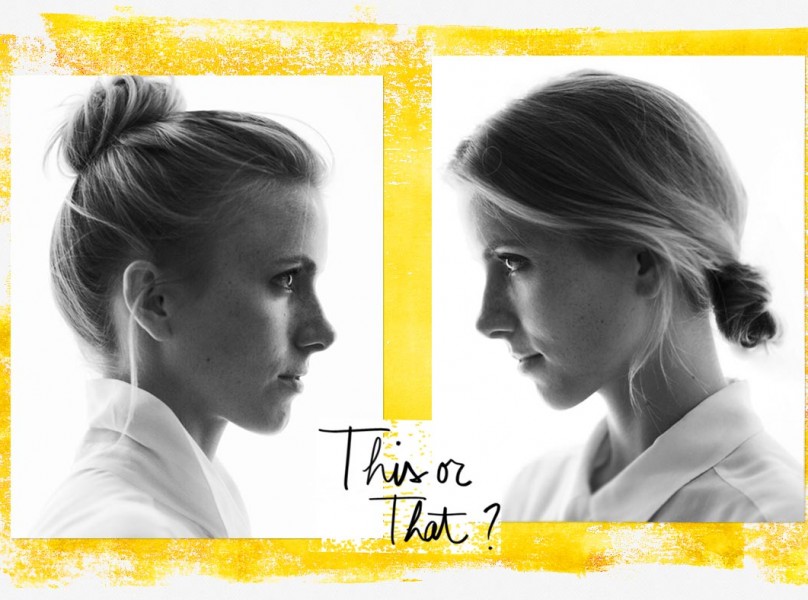

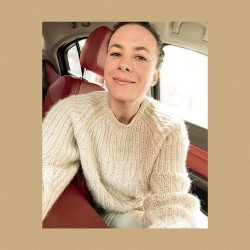

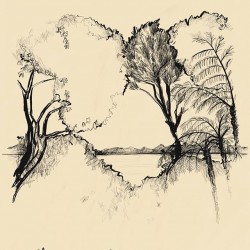
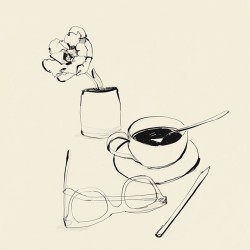
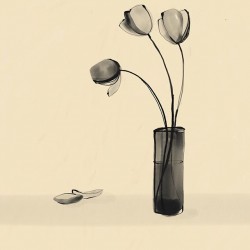
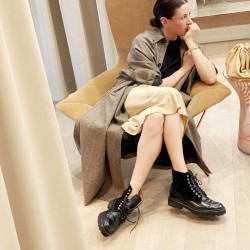
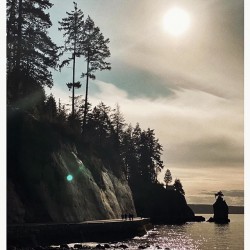
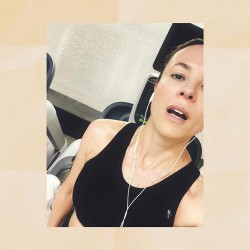
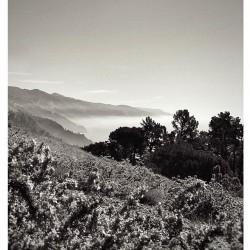
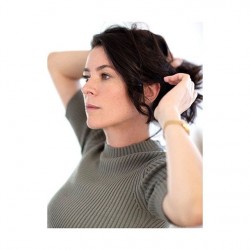
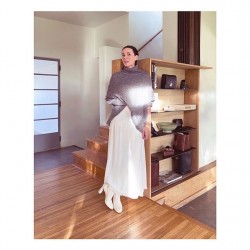
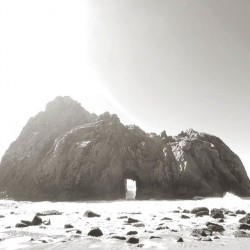

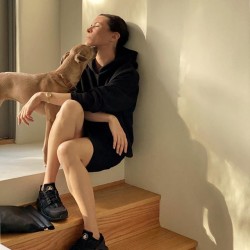
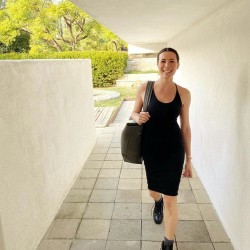
Nice interview, very interesting.
Passa a trovarmi VeryFP
this series of interviews is never disappointing! :)
http://littleaesthete.com
Super interview!! merci
Elle a l’air tellement normale et sympa, ça fait du bien ! j’adore la fin de l’interview où tu sens qu’elle a vraiment les pieds sur terre et surtout pas d’égo démesuré. Elle fait son job et elle le fait bien, c’est tout. Bon weekend le studio !
Baci, Ali
http://www.alidifirenze.fr
Hello Garance,
Cet article est passionnant. Vivant aux US je ressens le meme phénomène de cloisonnement dans un art ou une activité professionnelle ou il est tellement difficile de sortir alors qu’ici on te donne ta chance, tu fais tes preuves et voila…
Bon et puis en lisant cet article je me dis que j’ai été mal oriente pour mes études. Au lieu d’une école de commerce (c’était la mode quand on se savait pas quoi faire!!) j’aurais aimer faire une école d’art applique qqchose de plus manuel… Voila le regret de ce vendredi..Heureusement Garance tu es la pour me remonter le moral avec ton blog que j’adore. C’est si difficile de trouver sa voie et d’être épanoui dans une activité professionnelle!
Oh lala pas drole Alix today, un peu de legerte :
http://www.blushandbeyond.com/2014/09/26/pourquoi-les-mannequins-font-elles-la-gueule/
BIsous bisous
What an interesting interview!
http://www.FashionSnag.com
Interview tres interessante.
Ma phrase preferee :
“Quand tu ne sais pas quoi faire, dessine ou ecris quelque chose”.
J’aime beaucoup le look de Marion ainsi que son bracelet Clou.
great post..
xxxx
http://www.dominiquecandido.com
I feel her. when you own your own company you go crazy for the moments that you start really enjoying what it is that you like.
I started my own boutique and I dont feel the same way about it as when I first started. You start losing the love for what you really love just because it is a business.
Xo, Belen
A Hint of Life
Vraiment très intéressant cet article !!
J’adore quand tu fais ce genre de chose.
xo
http://stansmithwho.blogspot.fr/
Très belle interview qui donne envie de … partir pour d’autres contrées. Depuis mon retour à Paris, je me rends compte qu’il faut être absolument dans des cases ( la bonne formation, le bon stage …) pour qu’on veuille vous donner une chance. Parfois je me dis que les nombreuses années d’expérience ne sont là que pour faire “jolies” sur le papier. ça a l’air difficile aux gens de comprendre qu’une personne peut faire plusieurs choses et n’est pas monotâche !!!
Encore merci Garance, tes articles sont géniaux ! Je poste très peu de commentaire mais je lis quand même tous les jours ton blog car ça me redonne envie de croire en mes rêves. Le parcours de Marion est super intéressant, en plus je suis pas très loin de chez elle (je suis née à Montélimar) (la position géographique ne fait pas tout, mais c’est super intéressant de se dire qu’on peut réussir dans la mode sans venir de New York Paris … etc). Son parcours est hyper instructif, et les questions que tu poses vont droit dans le mil (genre comment elle a eu son stage) du coup c’est génial.
Merci Merci Merci <3
Bisou de Marseille :)
I like 2 become a designer…
Merci pour cette belle découverte. Le plus avec toi et tes articles (je me permets de te tutoyer) c’est que c’est présenté simplement et après l’interview on se sent proche de la personne interviewée. On comprend son parcours et cela nous donne des idées. Tout est possible dans la vie, il n’y a pas un parcours type et chaque rencontre et étape professionnelle est importante et nous permet de nous construire. Merci à Marion pour ce partage, merci à toi pour ton partage.
A bientôt
Gazelle
http://www.tendanceetgazelle.blogspot.com
J’aime bien lire les articles carrière (enfin, j’aime bien lire les autres articles aussi!).
Une fois j’avais râlé un peu du manque d’universalité de la situation de départ (pour la dame de Caudalie), et cette fois c’est le contraire : c’est bien de voir qu’il y a des gens qui arrivent dans ce milieu en répondant simplement à des annonces (alors que les annonces représentent 15% des postes disponibles d’après ce que j’avais lu une fois). Et puis cette dame a un rapport très sain par rapport à son rythme de travail, et ca fait du bien :)
A really informative and inspiring interview. Makes you think that you can make it too!
Thank you, lovely Garance :).
Aaaaah je suis drômoise ! Oh la la ! Trop d’émotion.
Super interview
Et très inspirante !
solenelara.fr
Ce serait tellement passionnant de pouvoir voir quelques croquis…
M.
A very inspiring interview, thanks to share your meeting.
M. la Mode
http://www.mlamode.wordpress.com
great interview!
http://hashtagliz.com
Love this series – this interview was especially fun to read because I’ve always wondered what the life of a designer is like! Thanks for sharing xo
Just yesterday I was telling a friend that even though working in fashion could seem so glamourous, the best part about working in accessories development is really the joy of seeing the ideas and products come to life. It is truly amazing to work with the factories in Italy and see the passion and skill they contribute. I am glad that this is still recognized!
Thanks for this great read and insight from another point of view into this crazy but magical world of accessory-making :)
– A
http://www.officinadelpoggio.com
Super interview carrière !
C’est celle qui m’intéresse le plus de toute la série (et je les ai toutes lues), elle colle parfaitement à mon parcours et à mes envie, merci beaucoup !
Bon we à toute l’équipe !
Garance- thank you so much for posting things like this! I’m an English major at university and often time it’s hard to think how I can apply my skills practically. This is awesome; I”m sure you’ve helped a lot of creative majors!
I always like the interview by Garance here! It’s so inspirational and tell you how the other successful girls in the world are. Highly recommend these interviews to the youngsters.
http://swingsnowman.blogspot.hk/
http://www.fashion-smog.blogspot.co.uk/?view=magazine
Inspiring lady!
Belle, compétente, efficace : FEMME !
I love this series. What an inspiring woman!
toujours très inspirant ces interviews carrière.. ça fait rêver !
xx CarolineJ
http://www.sleevesandheels.net
This is absolutely wonderful! She sounds like an amazing person!
xo
styleontheside.com
Cette interview est géniale! Longue et du coup un peu difficile à lire au bureau (j’ai perdu l’habitude de lire des articles longs…), mais vraiment intéressante. Merci Garance!
As a designer of ten years, this was a lovely article that really hit on some very valuable points. It can be a dreamy job but at the end of the day, you still have to work really hard.
Thank you so much for this article.
Merci beaucoup pour cet interview Garance!
Je trouve que tu as su poser les bonnes questions, précises détaillées, j’ai tout lu et j’ai eu les réponses aux questions que je me posais moi-même!
C’est génial que tu sois là pour nous faire découvrir ces métiers de la mode avec des gens qui savent de quoi ils parlent et qui en parlent bien.
Merci beaucoup!
This is one of your most amazing post! It’s really inspiring. Even if I don’t dream to be a designer, she still inspires me to do great at my work and be creative. “Just create it.” Thanks Garance! More dream job career talks please. :D
Just a bit of suggestion, please revisit the part about “What would your advice be to an aspiring designer?” I think some editing on redundancy on the last part of her answer, “You have to work on the way you communicate ideas. You have to be aware that it’s about it’s about expressing your enthusiasm.”
Superbe Marion Anaïs.
Belle interview et parcours très intéressant.
C’est très émouvant de lire l’interview de Marion que j’ai pu rencontrer chez Proenza Schouler lors d’un stage. C’est une personne adorable, qui prenait le temps de m’expliquer les différents projets que l’on me confiait. Elle ne se souvient certainement pas de moi, mais moi elle m’a marquée :)
Et merci à toi Garance pour cet interview!
xx
Amandine
D’ou vient ce magnifique chemisier?
Merci Garance, c’est toujours très interessant en tant que créatrice moi-même de découvrir le parcours de chacun.
A bientôt ;-)
Jeanne Villani Cerio
http://www.nicolasvillani.fr//